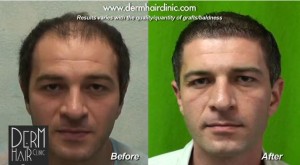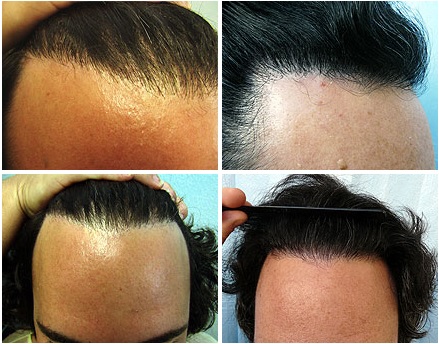
Achieving Natural Hairline Restoration
Achieving natural hairline restoration is probably one of the most challenging aspects of hair replacement surgery. There are many details that contribute towards a quality outcome.
1. Ethnic Characteristics– Hairline restoration should be performed with the understanding of different hair growth patterns and nuances within different ethnic groups. Asian Patients whose traditional donor area hair is significantly thicker than the other races, need special attention. Dr U overcomes this problem by using finer nape hair which he extracts efficiently using his UGraft technologyhttps://www.dermhairclinic.com/los-angeles-fue-hair-transplant-follicular-unit-extraction/
2. Natural Hair Growth Patterns– The results should look indistinguishable from someone who has not had any hair loss. Normally, the outer edge of a hairline will have finer caliber hairs that are arranged in a relatively irregular pattern. In an FUE hair transplant procedure, each hair graft should be spaced within close proximity. Otherwise it would be easy for people to tell that grafts were inserted. Going from the hairline towards the back of the head, the hairs gradually become thicker. The doctor must be mindful of these natural patterns including the direction and proper angles of hair growth. Softer hairs can be extracted through techniques in FUE hair transplant from areas such as the nape or other regions of the body. Re-inserting these finer hairs also requires specialized skill to avoid trauma to the skin that could result in outcomes such as pitting, cobblestoning, poor yield and tufting.
UGraft an advanced FUE procedure enables Dr Umar to use finer caliber hair for the purpose of achieving a soft looking hairline that closest to nature. With uGraft, finer hairs from the nape of the neck or even leg hair is used in the vanguard areas of the hairline to give a feathered soft look.
Follicular units extracted through FUE usually contain a natural grouping of 1-4 hairs. For the softer hairs of a hairline, grafts with only one hair should be used to avoid the look of plugs that patients do not want.
3. Decision on the best hairline shape-In an FUE hair transplant procedure, there is also the consideration of what hairline design would look the absolute best for a particular patient. Certain hairline shapes frame the face better than others. They should not be placed too high as this result would do a poor job of framing the face. The contour of the hairline in hairline restoration surgeries should have a visual harmony in balance with the temples. The hairline should not be too low where it might look like a hairpiece. All these different variables require the expertise and the skillful touch of an experienced hair restoration surgeon.
FUE hair transplant technology, such as Neograft, with vacuum suctioning capabilities may cause trauma (through air drying, and hitting the sides of the vacuum tube) to delicate follicles, particularly the ones bearing finer hair. However patients can choose to have the suction turned off. during their procedures.
Artas which is an FUE robot uses algorithms as opposed to a vision of the final outcome to select each hair graft. On a final note, Dr. Umar believes that FUE technology requires further refinement before it can even be considered for the extraction of body hair follicles.

